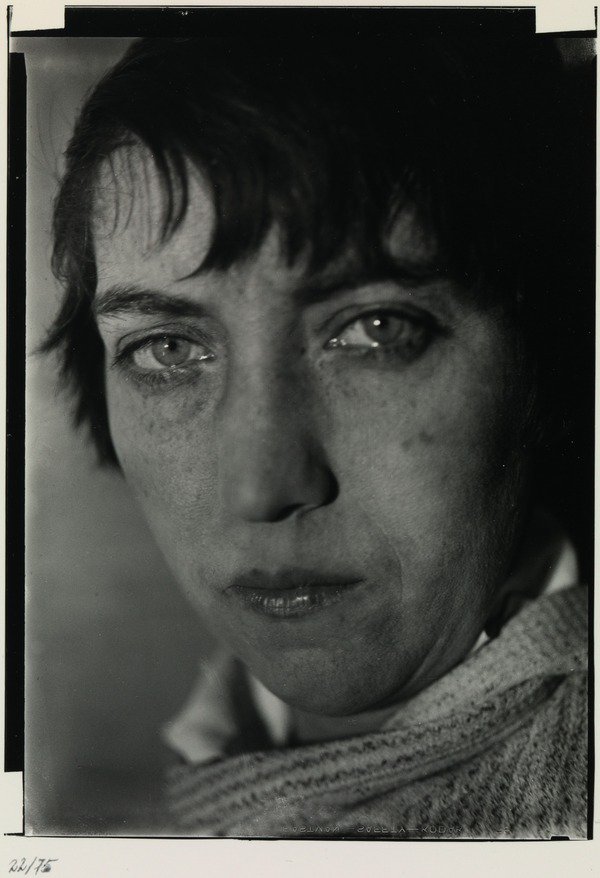Walker Evans
dal 23/7/2014 al 8/11/2014
Segnalato da
23/7/2014
Walker Evans
Martin Gropius Bau, Berlin
A Life's Work. His work played a decisive role for what is called the 'documentary style'. For decades, right up to the present, the prolific photographic oeuvre of Walker Evans has acquired an increasingly model character. With his sober documentary fashion he recorded a uniquely authentic picture of America, and like no other before him showed a particular feel for both the everyday and the subtle.

Curated by James Crump
Walker Evans (1903–1975) was one of the great personalities of
20th century photography. He first came to public attention through his documentation of poverty in America at the time of the Great Depression that began
at the 29th of October 1929 with the Black Friday and dominated the 1930s. Until
today his reception is closely linked to the photographs he produced in the 1930s.
The exhibition displays with well over 200 original prints from the years 1928 to
1974 both, the icons of his oeuvre, as well as rarely published photographs.
His work played a decisive role for what is called the “documentary style”. For decades, right up to the present, the prolific photographic oeuvre
of Walker Evans has acquired an increasingly model character. With his sober
documentary fashion he recorded a uniquely authentic picture of America, and
like no other before him showed a particular feel for both the everyday and the
subtle.
Visitors follow both Evans’ biography and the changing face of
America, from the Great Depression to the onset of stability and business as usual: early impressions of the 1920s from the New York neighbourhood he lived in;
portraits of his friends and fellow artists which give some indication of the ramified cultural ambience he inhabited; specimens of 19th century architecture that
have blended into the evolving cultural life about them; picture cycles from Tahiti
and Cuba; images of African sculptures and masks commissioned by the New
York Museum of Modern Art; and numerous photographs taken in the 1930s in the
rural south of the USA, which contrast starkly with the lifestyles of those who may
be seen promenading in the fashionable streets of cities like New York. The works
are taken mostly from the considerable private collection of Clark and Joan
Worswick, but also from various German collections.
The exhibition shows icons in the history of photography: por-
traits of farmer families, abandoned houses, vacant fabric buildings. In 1935 Evans was commissioned by the American Farm Security Administration (FSA) to
document the life of the agricultural workers that were affected by the Great
Depression. The resulting photographs that equally showed misery and poverty
made Evans famous.
The show also highlights some of the photographer’s lesser
known motifs dating from the 1940s until 1960s. These include works done for
Fortune, the magazine founded by Henry Luce in 1930; pictures taken on trips to
London from 1945 onwards for the periodical Architectural Forum; or during stays
at Robert Frank’s Nova Scotia house in the late 1960s.
In addition to street scenes, American monuments and shop window displays far from the world of “big business”, examples of his significant
subway photographs are to be seen, taken with a hidden camera. We also see
interiors whose modest appointments tell of the life of those who live in them,
pictures that inevitably recall Evans’ remark that “I do like to suggest people by
absence”. Evans’ predilection for typography, advertising and mass-produced
articles give rise to strangely fascinating shots which seem to anticipate the soon-to-emerge Pop Art and its assemblages.
The last photographic chapter comprises colour polaroids of
compressed partial views, whether these be road markings or signs and lettering
on buildings, which contrive to be concrete, abstract and revolutionary at once.
They are trailblazers for a kind of colour photography that Evans had applied
while working for Fortune and of which he had sometimes taken a critical view.
The new way of using colour has been continued in many works of the following
generation on whom Walker Evans’ photographs have had a liberating effect.
Organizers Berliner Festspiele. An exhibition of the Photographische
Sammlung/SK Stiftung Kultur, Cologne, from the collection of Joan and Clark
Worswick. Supported by the Cultural Funds of the German Savings Banks Association, the Cologne/Bonn Savings Bank and the Berlin Savings Bank.
Organization: Ellen Clemens
Tel. +49 30 254 86 – 123, fax +49 30 254 86 – 107
organisation@gropiusbau.de
Partners
WALL, BTM-Visit Berlin, Bouvet Ladubay
Media partners
Tagesspiegel, Exberliner
Catalogue
Hatje Cantz Verlag
Walker Evans: Decade by Decade
€ 49.80
Guided tours
Public guided tours
Sundays at 2 p.m. (without booking)
€ 3 plus € 5 admission per person
Lunchtime guided tours
Wednesdays at 1 p.m.: 6.8., 3.9., 1.10.2014
Booked guided tours
For groups: Guided tours in German (60 min.)
Adults: € 60 plus € 5 admission per person
School classes: € 45 plus € 5 admission per person, admission
free for those aged 16 or under
For guided tours in other languages an additional fee of € 10 is
charged.
Inquiries and bookings for guided tours
MuseumsInformation Berlin
Tel. +49 30 / 24749-888, fax +49 30 / 24749-883
museumsinformation@kulturprojekte-berlin.de
www.museumsdienst-berlin.de
Image: Walker Evans: Berenice Abbott, Portfolio Print, 1929–30. 127 x 178 mm. Blind Stamp “Walker Evans Archive I” (1974) © Walker Evans Archive, The Metropolitan Museum of Art
Public Relations
Head: Dr. Susanne Rockweiler
Press Office: Christiane Zippel
Tel. +49 30 254 86 – 236, fax +49 30 254 86 – 235
presse@gropiusbau.de
Press conference: Thursday, 24 July 2014, 11 a.m. Martin-Gropius-Bau, Cinema
Martin-Gropius-Bau
Press Office, Niederkirchnerstraße 7, 10963 Berlin
Opening times Wednesday to Monday, 10 a.m. – 7 p.m., closed Tue, until 10 August 2014 daily open from 10 a.m.-8 p.m
Admission fees
€ 7 / reduced rate € 5, groups (of 5 or more persons) € 5 per person
Admission free for those aged 16 or under
Combination tickets at favourable rates are available at the cash desk
Online tickets: www.gropiusbau.de/tickets



